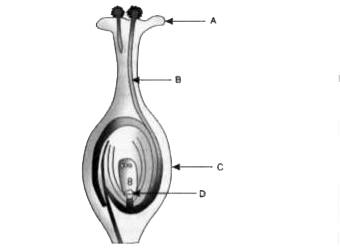The part of the flower"Which develops into fruits after fertilizationSolution in Telugu
1. Ovary
2. Ovule
Petals
Flower
Step by step video & image solution for The part of the flower"Which develops into fruits after fertilization by Biology experts to help you in doubts & scoring excellent marks in Class 7 exams.
Updated on:21/07/2023Topper's Solved these Questions
Similar Questions
How can you say soil is precious resource? Give reasons.
View SolutionCleaning of water is a process of removing.
View SolutionIn plants after fertilization, the ovary develops into fruits and ovules develop into seeds.
View Solutionनिषेचन के बाद पुष्प का कौन-सा भाग फल में बदल जाता है?
View Solutionनिषेचन के बाद पुष्प का कौन-सा भाग फल में बदल जाता है ?
View SolutionAfter fertilization , ovule develops into seed and ovary into fruit .
View SolutionOvary develops into fruit after fertilization. While eating an Apple which part do you eat? Explain.
View SolutionThe part of the flower which develops into a fruit is
View SolutionPart of the flower that develops into fruit and part of the seed that develops into root respectively are
View Solution(a) Identify A, B, and D in the given diagram and write their names.

(b) What is pollination? Explain its significance.
(c) Explain the process of fertilization in flowers. Name the parts of the flower that develop after fertilization into
(i) seed,
(ii) fruit.
View SolutionWhich part of the flower turns into fruit after digestion?
View SolutionAfter fertilization in flowering plants, seeds bearing embryos are found inside the fruits. If seeds are developed from ovules, Name the parts that given rise to embryo and fruits.
View SolutionName the part of the flower which develops into fruit and seed after fertilization.
View SolutionThe part of the flower"Which develops into fruits after fertilization
View SolutionThe part of the flower which develops into a fruit is
View SolutionPart of the flower that develops into fruit and part of the seed that develops into root respectively are
View Solution
